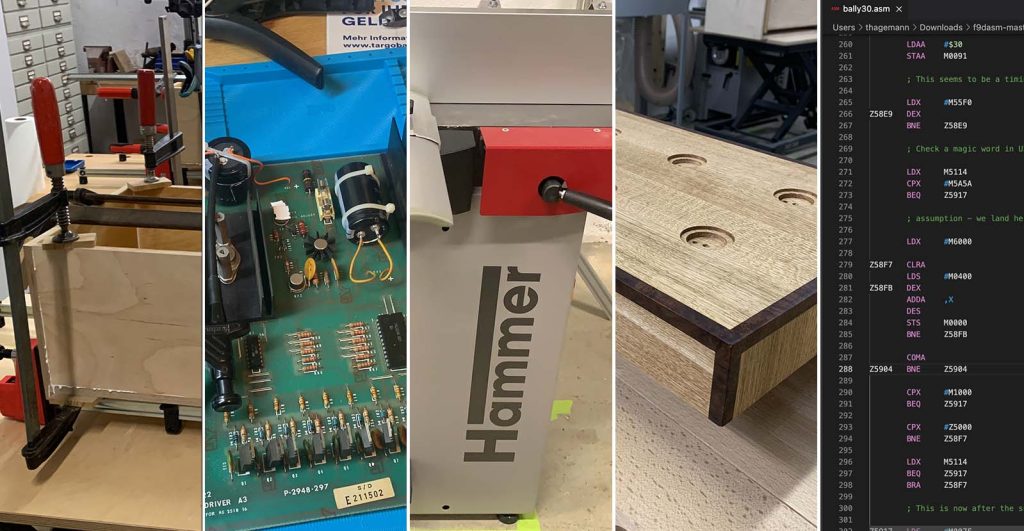What is BoomBox
Some years ago I was searching for a portable music box with good sound and a lot of power, being able to be used with a battery. Unfortunately the things I found on the web were very disappointing. They were either cheap or had underwhelming sound. The ones being good were absolutely not affordable.
So I started to think about building a box on my own – and the result is here.
In the meantime I have pimped the box so it is now called BoomBox 2.0. The first version had two 30W sine amplifiers and they turned out to be too weak for putting the crowd into motion (they were constantly clipping), so I reworked the electronics.
Case
As a basis I used two old Pioneer loudspeakers (3-way) which were lying around not being used any more. They have 2x60W sine, so much more than we will ever need. I designed the new housing to match the volume characteristics of the original cases as far as possible to not get into real trouble of re-designing everything.
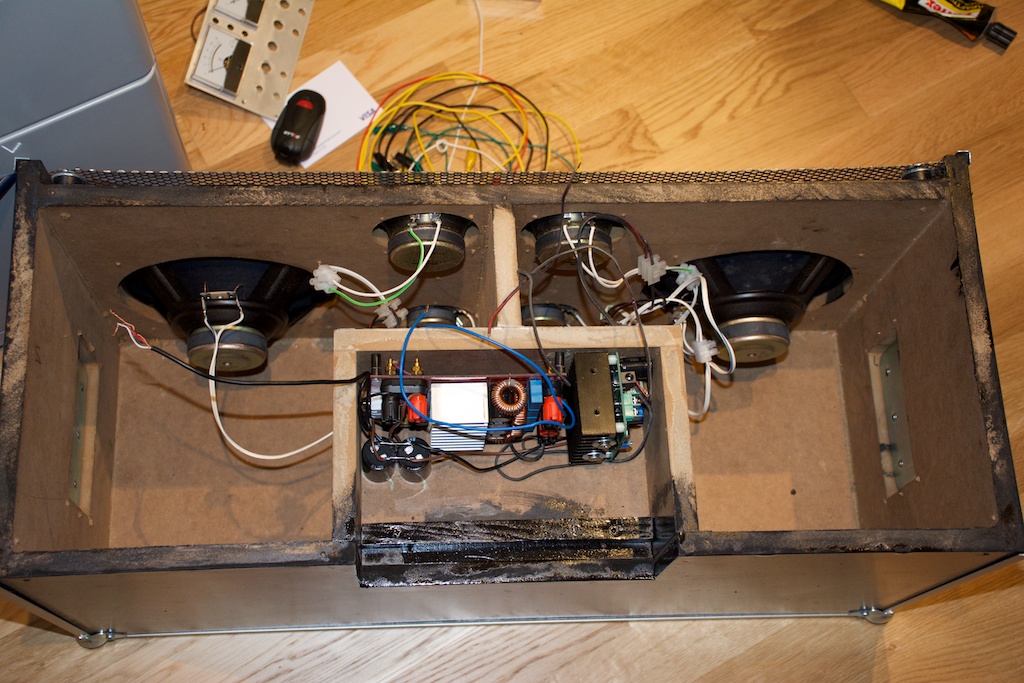

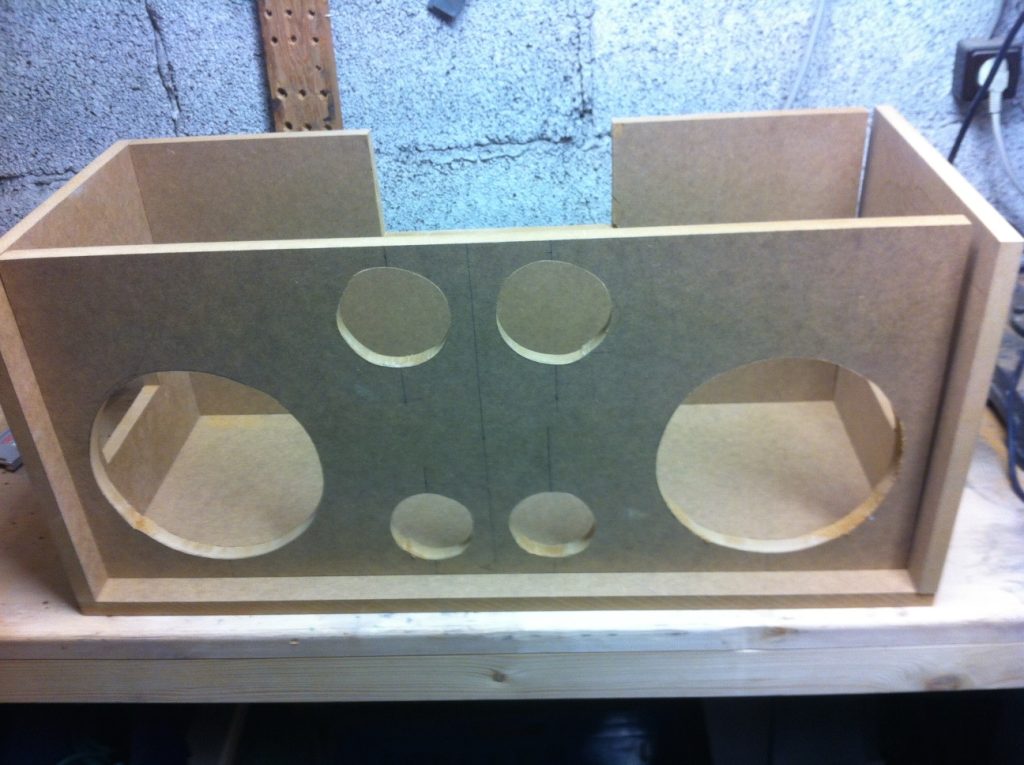

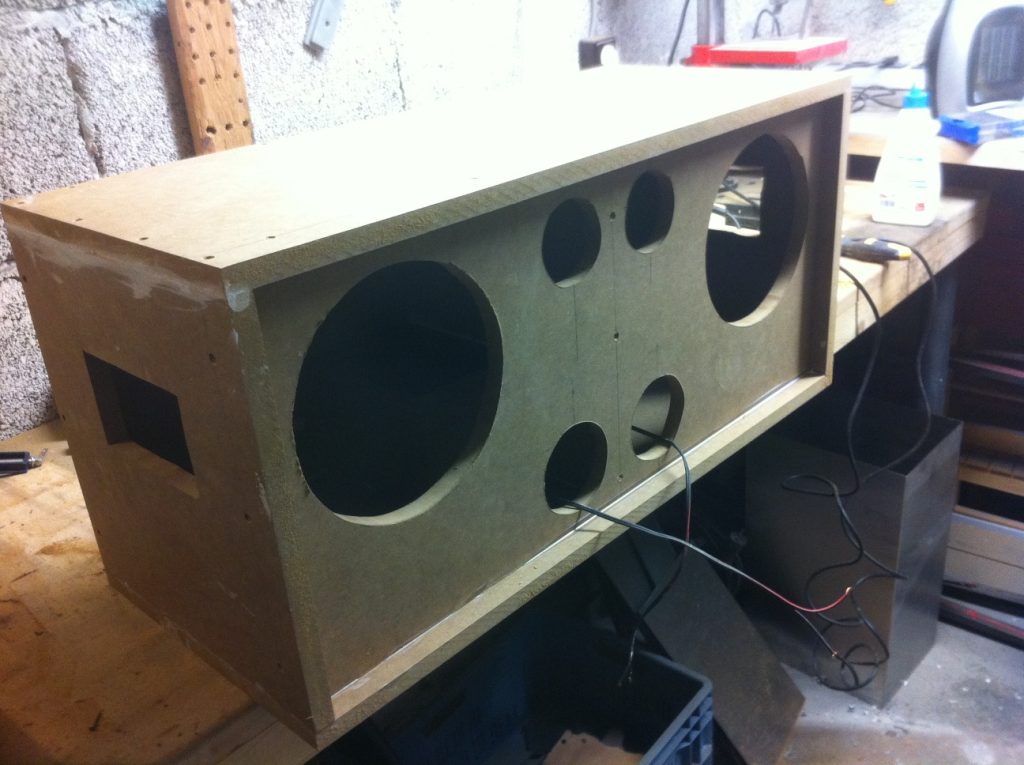
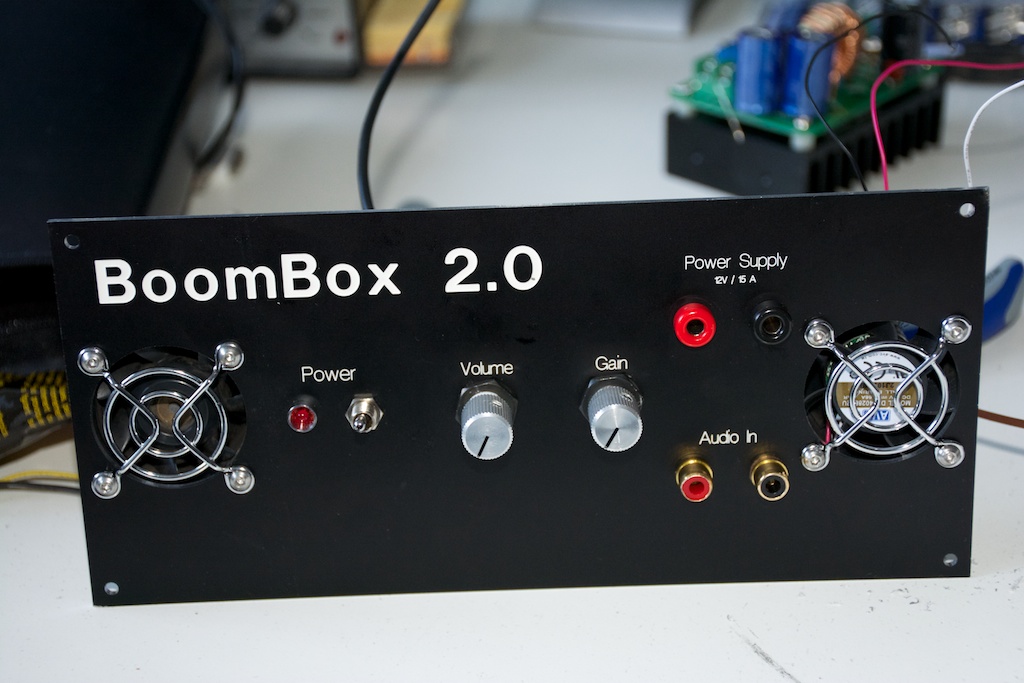
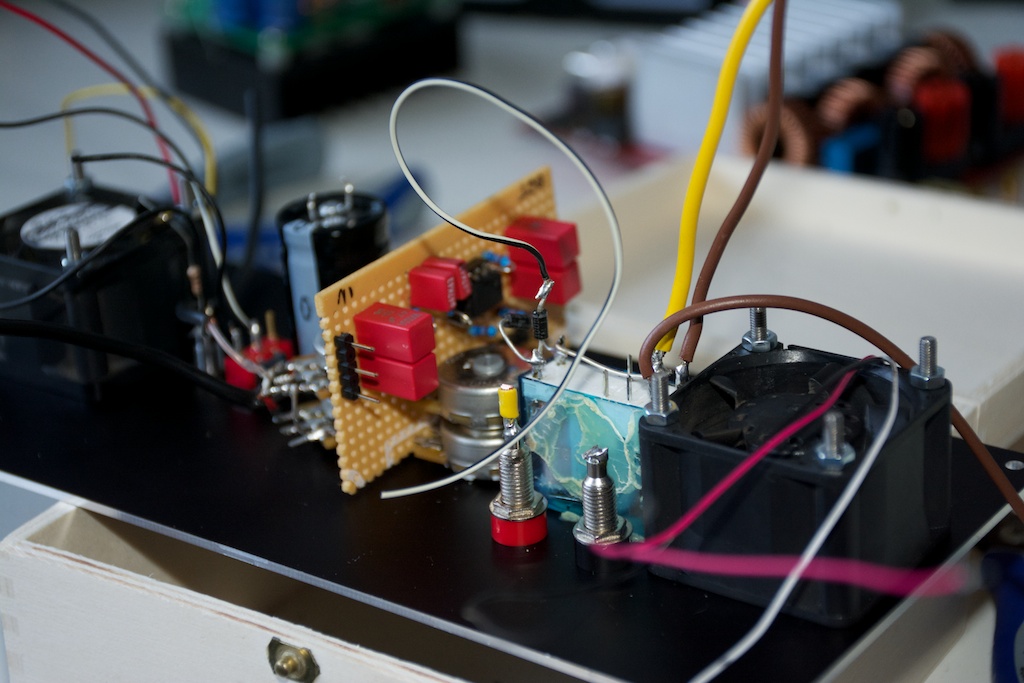
As you can see in the pictures above, the electronics part is in a small box fully separated and the two left / right areas are separated as well. The front cover was a bit more complicated to get it as small as possible:
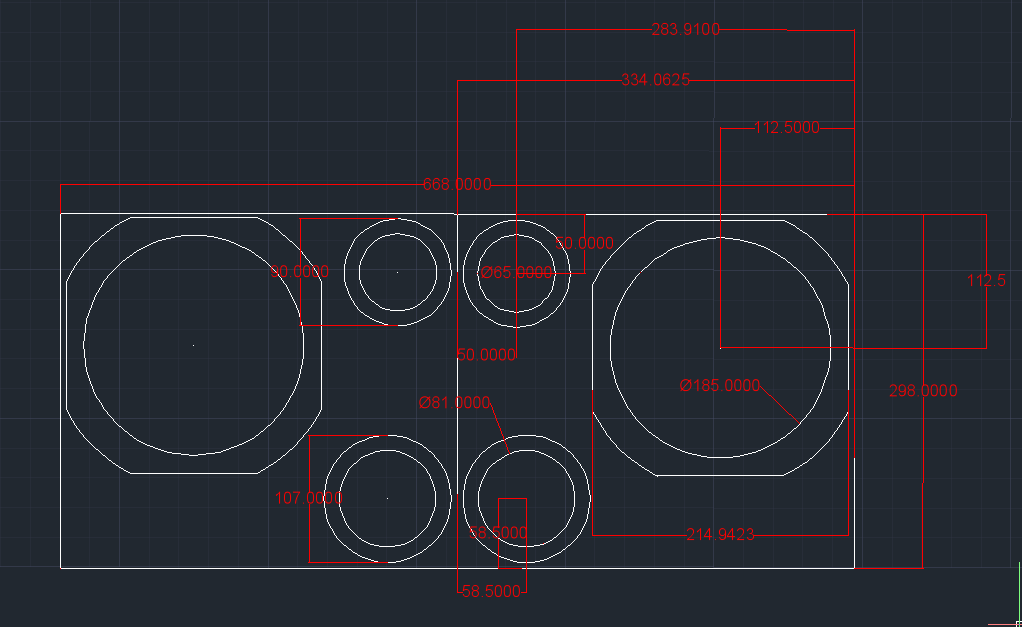
It took a bit of Excel math to get all the sizes right to be able to start to assemble it (see downloads).
Electronics
I used two major components available from Alibaba:
a 600W step up converter increasing the 12V being available to 50V for the amp module a TAS5630 based 300W Stereo Class-D Audio Power Amp Amplifier Board To get the temperature down, I included two fans with a reduced supply voltage to make their noise acceptable. As a result from the v1.0 of the Box (which had a tone control which was never used), I included a gain amp because e.g. an iPad has a very low volume headphone out.
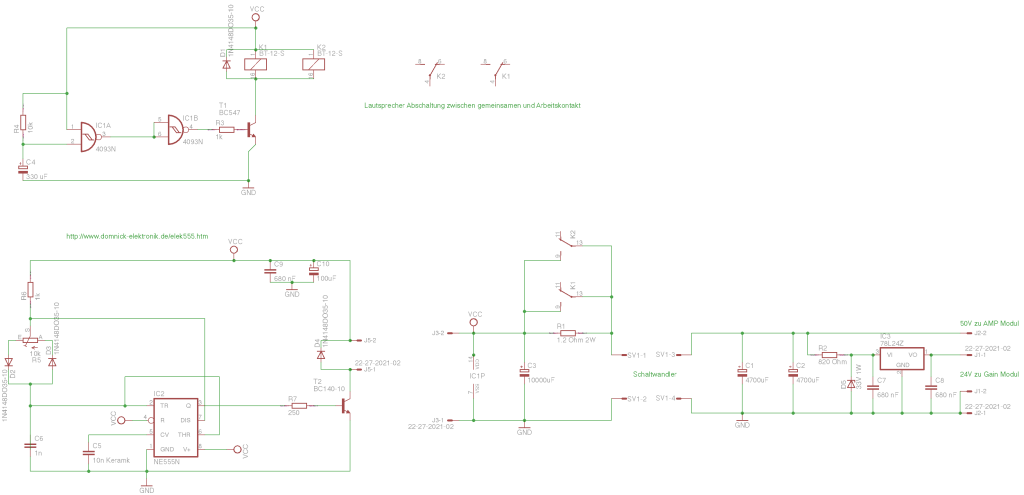
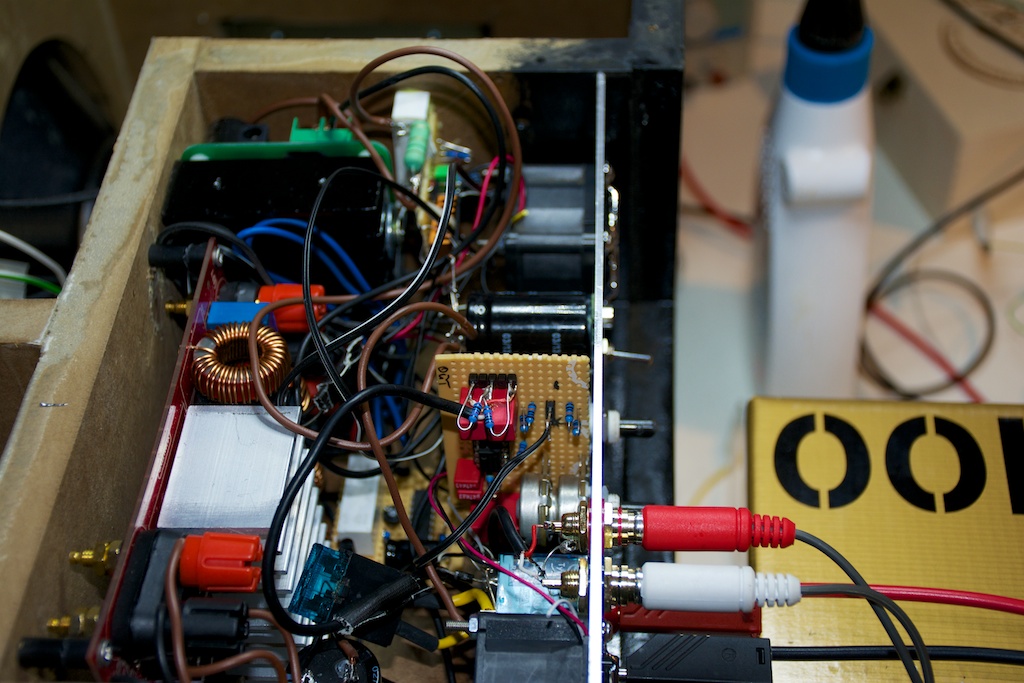
Audio wiring
The audio wiring is quite simple:
Starting at the RCA jacks it goes straight to the volume fader and then to the input of the gain circuit From there to the input of the TAS module
Power wiring
Far more complicated as the fans are polluting the supply voltage heavily and different GND potentials are evil.
We got three supply voltages:
- the incoming 12V from the battery,
- 5V for the fans generated from the 12V by a 7805 IC
- 50V coming from the inverter back
- another supply getting us 24V from the 50V (to stay on the same ground potential) for the gain circuit
- The 12V is buffered with a 10000uF cap
- The 50V is buffered with two 4700F caps
Special things
Hence the Inverter is a beast when starting up, sucking almost every power supply to death and producing 50V rectangle pulses on the power supply, a soft start was designed for it. So a 1.2Ohm resistor is used when the system is powered on to make the inverter start slowly filling the caps. After 20 seconds, the resistor is shortened by a relay.
Although the TAS module has a speaker protection build in, a loud “plop” was almost killing the speakers. So I added another small circuit, connecting the speakers after 20 seconds to the amp module. This is the same module used for the inverter slow start relay.
Gain
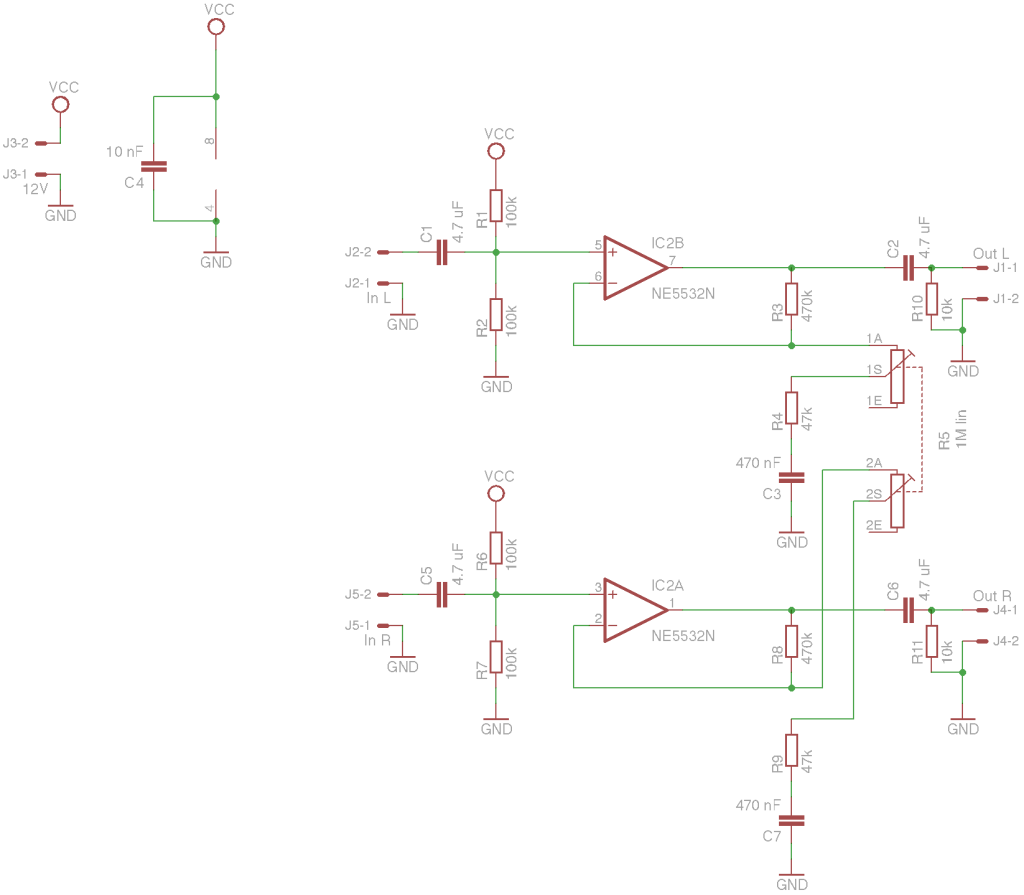

The gain amp is build around a NE5534 op amp being considered as low noise. It gives you an gain from 3 dB to 20 dB max, which is far more than necessary for the devices being used as audio source. It is really crucial that this one here gets the power from a source behind the inverter – crazy noise are otherwise unavoidable as the inverter pulses are transferred to the op amp.
Front panel

I used the service of a Germany based company to get the front cover designed and CNCed for me – this was bit more expensive, but the v1.0 front cover which I was doing on my own took me ages and did not look good in the end. You can see the two 25X25X10 mm fans being mounted (one directing in, one out) which are slowed down by using only 5V power supply – far more air than we need.
There is only special thingy here: the RCA jacks are fully isolated and not connected to the front, as again the GNDs will be mixed up otherwise.
Outcome
Putting it all together:
- 2x 150W sine amp (will be lower as the inverter will not give that much power)
- gain control from 1.5 to 10
- voltage revearsal proof (by a clever relay based circuit)
- With my 26AH dry fit battery, this lasts more than 8h at unbelievable volume (and good sound)
